Facts about Slovakia

The barbarian Kingdom of Vannius, founded by the Germanic tribe of Quadi, existed in western and central Slovakia between 20 to 50 C.E.

The plight of Slovak Jews under the Slovak state continues to haunt Slovakia’s past, and the anti-Jewish laws of 1940, mandating Aryanization, prove that anti-Semitism ran amok prior to deportations.

Nevertheless, historians agree that the existence of Czechoslovakia has benefited Slovakia greatly in that it allowed it to almost close the economic and cultural gap with its western neighbor.

Only the 1843 version of the language, authored by Љtъr, Hurban, and Hodћa and based on the central Slovakian dialect, won the support of general public.

At the beginning of the nineteenth century, a national musical tradition began to develop around Slovakia’s impressive folk heritage.

The Prague uprising (Praћskй kv?tnovй povstбnн) began on May 5, 1945, when Czechs, assisted by a revolting Russian division formerly in service of the Waffen SS, had revolted against the Nazi occupants.

The first attempt to enact the literary Slovak language (based on the western Slovakian dialect) came in 1787 by Anton Bernolбk, but it was not accepted by Slovak Protestants.

Politicians with anti-German leanings publicly acknowledged the existence of Czechoslovakia in the Christmas Agreement and proclaimed allegiance to the joint state of Czechs and Slovaks against Hitler’s Germany.

In 1918, Slovakia joined the regions of Bohemia and neighboring Moravia to form Czechoslovakia.
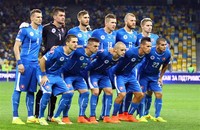
Despite plundering by Germany, Slovakia boasted one of the most stable economies among neighboring countries.

Slovakia chose autonomy and aligned itself with the fascist Germany during World War II, as an alternative to a direct German control within the Protectorate of Bohemia and Moravia.

The Magyars gradually occupied Slovakia, which, nevertheless, retained its privileges in this new state because of its high level of economic and cultural development.

Slovakia even had its own currency, but because Germany did not honor the economic agreements and, paradoxically, incurred a large debt, the Slovak government resorted to anti-Jewish measures to replenish its coffers.

National Slovakian music was heavily influenced by liturgical and chamber music.
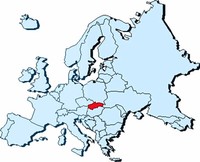
Located at the heart of Europe, Slovakia shares borders with Poland to the north, the Czech Republic in the northwest, Austria in the southwest, Hungary to the south, and the Ukraine to the east.

The fall of communism in 1989 precipitated the unresolved issues between Czechs and Slovaks, and Slovakia declared independence in 1993.

Slovakia joined the European Union on May 1, 2004, and NATO on March 29, 2004.

Traditional Slovakian music is one of the most original of Slavic and European folklore.

On November 22, 1938, Slovakia’s political autonomy was signed into law, although part of its territory was taken over by Hungary, and Germany occupied portions of Bratislava.

Showing an unusual resolve, Humayun gathered an army and marched on Bahadur.

Beginning around 450 B.C.E., Slovakia was settled by Celts, who built powerful settlements in Bratislava and Liptov.

Slovakia is subdivided into eight regions/countries (kraje) named after their respective principal cities.

D. novaehollandiae diemenensis, a subspecies known as the Tasmanian emu, became extinct around 1865.

Slovakia and the Czech Republic went their own ways after the Velvet Divorce but have remained close partners.

In 1969, Czechoslovakia was reorganized as a federation of the Czech Socialist Republic and the Slovak Socialist Republic.

Slovakia has transitioned from the centrally planned economy to a modern market economy.

Lacking a state structure of its own, Slovakia was forced to enlist assistance with the revival cause from similar ideological movements in Hungary.
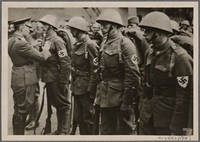
After World War II, Slovakia became part of Czechoslovakia as a satellite of the communist Soviet Union and its Warsaw Pact.
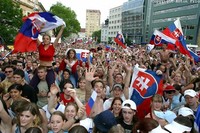
The Slavic tribes settled in Slovakia in the fifth century, with the most glorious periods being those of the King Samo’s Empire and the Principality of Nitra.

In August 1944, the U.S. Air Force bombed a state-owned refinery in Central Slovakia despite multiple warnings sent to the exiled Czechoslovak government in London that the refinery was crucial to the uprising-in-the-works.

Slovak settlements extended to the northern half of present-day Hungary, while Hungarians later settled down in the southern part of Slovakia.

One of its leaders was Anton Bernolk, a Jesuit priest who codified a Slovak literary language based on dialects used in western Slovakia.

The impact of centuries of cultural repression and control by foreign governments is also evident in much of Slovakia’s art, literature, and music.
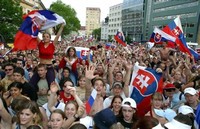
Slavs inhabiting Slovakia were under the constant threat of nomadic Avars until their defeat in 623, due in part to the Frankish merchant Samo.

